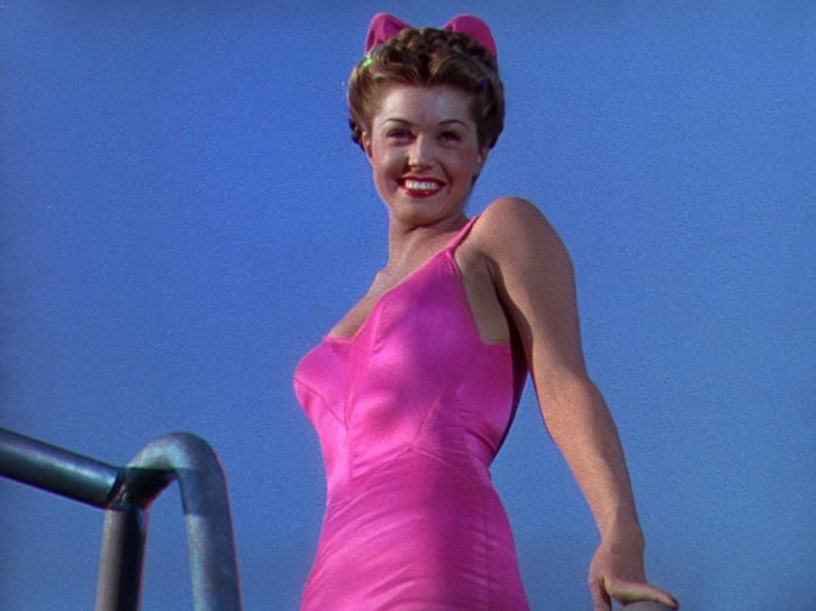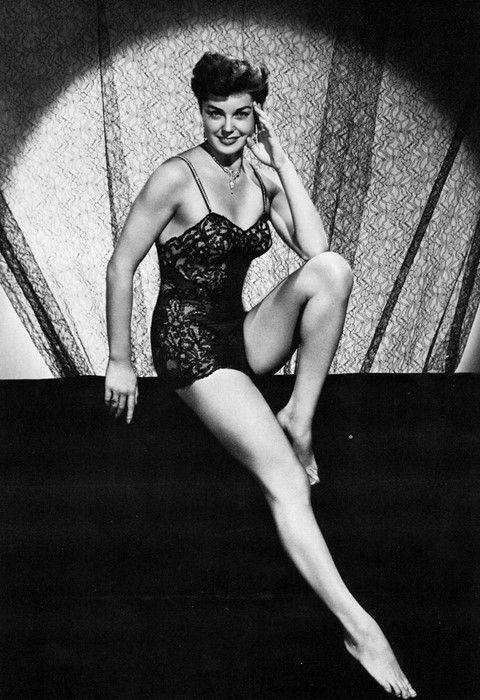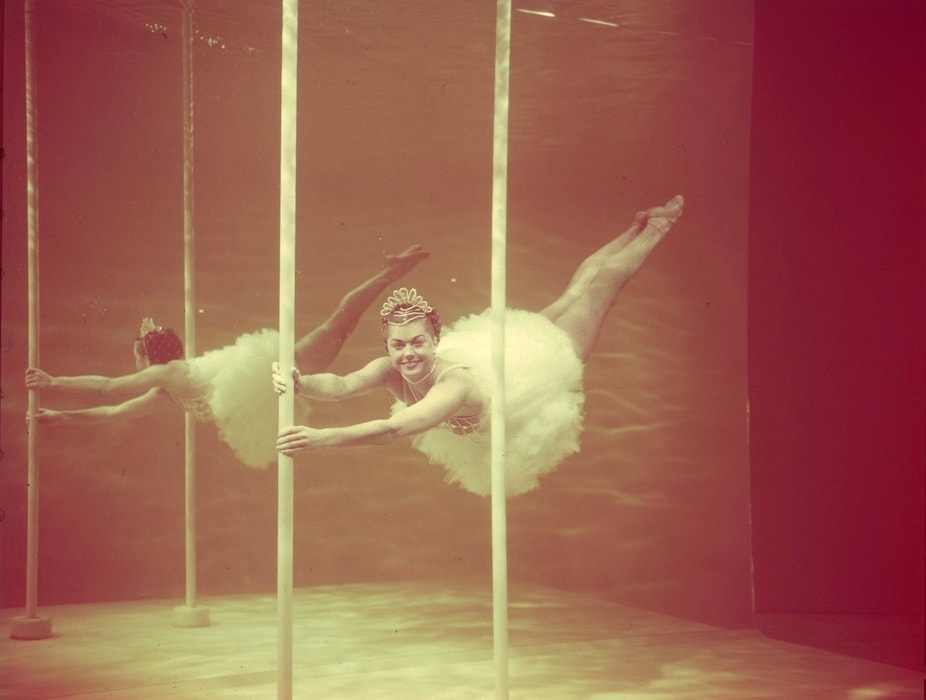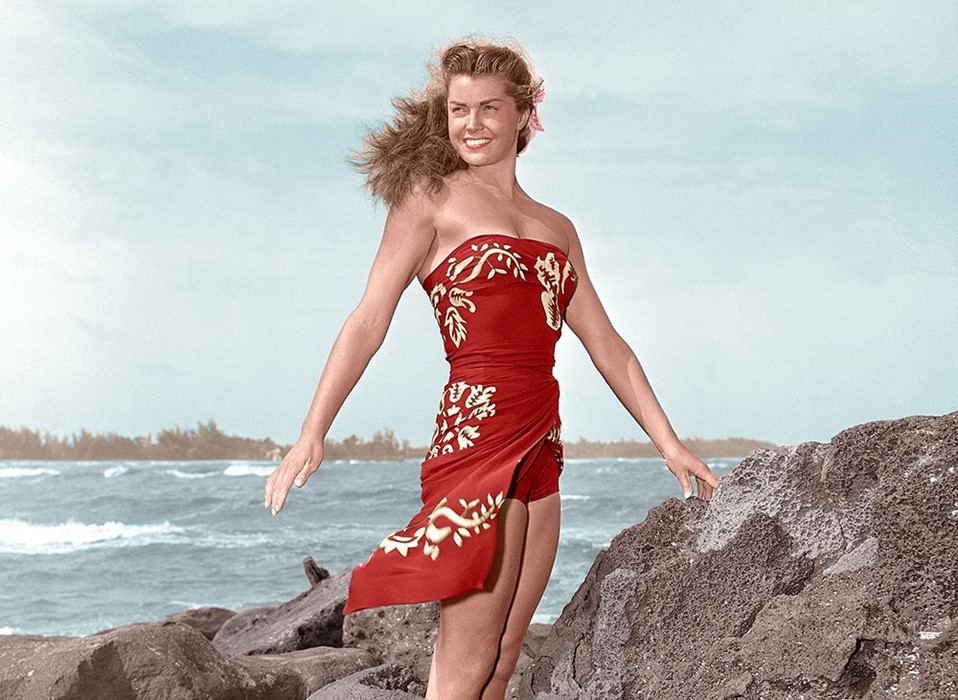Esther Williams was a teenage swimming champion-turned-movie star for the ages, whose prowess in the water took her to the big screen
Is there any better mark of a true Hollywood Golden Age icon than having a sub-genre of film created especially for you? Such was the case for Esther Williams when, in 1941, she signed a contract with storied American studio MGM. A couple of years later, the ‘Aqua Musical’ was born. Williams shot to fame thanks to her prowess in the water, starring in films like Bathing Beauty (1944), Million Dollar Mermaid (1952) and Dangerous When Wet (1953) – to name but a few. Swimming, diving and performing complex routines and tricks on camera was her forte, and this, coupled with her singular beauty and statuesque figure, allowed her to become a cherished star across America.
Her legacy continues to this day; the sport of synchronised swimming is widely credited as having been popularised during her spell as ‘Hollywood’s Mermaid’ (“Clark Gable was the first to have called me ‘mermaid’,” she once said), eventually debuting as an Olympic sport at the Games of 1984, at which she served as commentator. Here, to coincide with what would have been Williams’ 96th birthday, we remember her in all her glory.

Defining Features
Williams’ talent in the water was a thing to behold. In her teens she broke records swimming competitively, and her skill saw her claim three National Championship titles by the time she had reached the age of 16. Plans to swim for the US in the 1940 Olympic Games were thwarted with the outbreak of World War Two, but Williams had garnered attention from show business insiders for her looks and poise in the water. Following a spell performing in Billy Rose’s Aquacade – alongside star of Tarzan and fellow competitive swimmer Johnny Weissmuller, whose attempts to seduce her Williams detailed extensively and somewhat fiercely in her 1999 autobiography – Williams signed with MGM, and began her acting career.
Bathing Beauty was Williams’ first technicolour musical and saw her play a swimming instructor opposite Red Skelton. Though her water-based scenes were relatively few throughout the film, she fronted the posters and billboards in her swimsuit, and became an instant sensation. With it, the nation’s appetite for the Aqua Musical was born.

Out of the water, Williams was possessed of a shrewd mind. She stood up to her challengers – if not at the time, then on reflection, teasing out the intricacies of many of her experiences with candour and sass in her autobiography, The Million Dollar Mermaid. In the book, she remembers confronting Gene Kelly on the set of Take Me Out to the Ball Game, a movie in which she was not required to be in water. “As much as Kelly resented the fact that I was not a dancer, he resented my height even more,” she writes. She would retort: “Gene... I have perfect proportions in a swimsuit, and that’s why I’m here making movies at MGM. I’m sorry that my physique doesn’t fit in with your plans.” The Telegraph remembered her as “the queen of gossip” and a “talented disher of dirt” in the preamble to its obituary when she died at 91, quoting passages from her self-penned book in all its candid glory.
Seminal Moments
Williams’ best-known (and own favourite) film was Million Dollar Mermaid, in which she played Australian swimming sensation and actress Annette Kellerman. In the film, Williams’ skills are endlessly showcased: she floats elegantly in underwater ballet scenes, remains impossibly poised while surfing down a slide into a sea of synchronised swimmers, graceful even while she is lifted out of the water dangling precariously from a ring. The film is marvellous, a true spectacle, with Williams beaming at its centre; in it, MGM succeeded in honing a box-office sensation.
Long after her film career subsided, Williams did not venture far from the water. She famously never stopped swimming, but turned her attention to the sport’s accoutrements, launching her own swimwear line. “Women worldwide are fighting a thing called gravity,” she said of her business venture. “I say to women when I talk to them, ‘You girls of 18 have until about 25, 30 at the most, and then you have to report to me. My suits are quality fabric. I put you in a suit that contains you and you will swim in. I don’t want you to be in two Dixie cups and a fish line.” These suits still sell today and, happily, welcome emphasis continues to be placed on the influence of the brand’s namesake star.

She’s an AnOther Woman Because...
Williams enjoyed a lucrative and splashy (in more ways than one) career, but it’s the manner in which she conducted her life that truly sets her apart. She endured hardships – of her four husbands, Ben Gage gambled and grappled with alcohol, and Fernando Lamas refused to allow her three children in their house for the entirety of their 13-year marriage – but steadfastly remained Esther Williams, champion swimmer, star of the screen, and self-aware, whip-smart pin-up. An AnOther Woman indeed.
